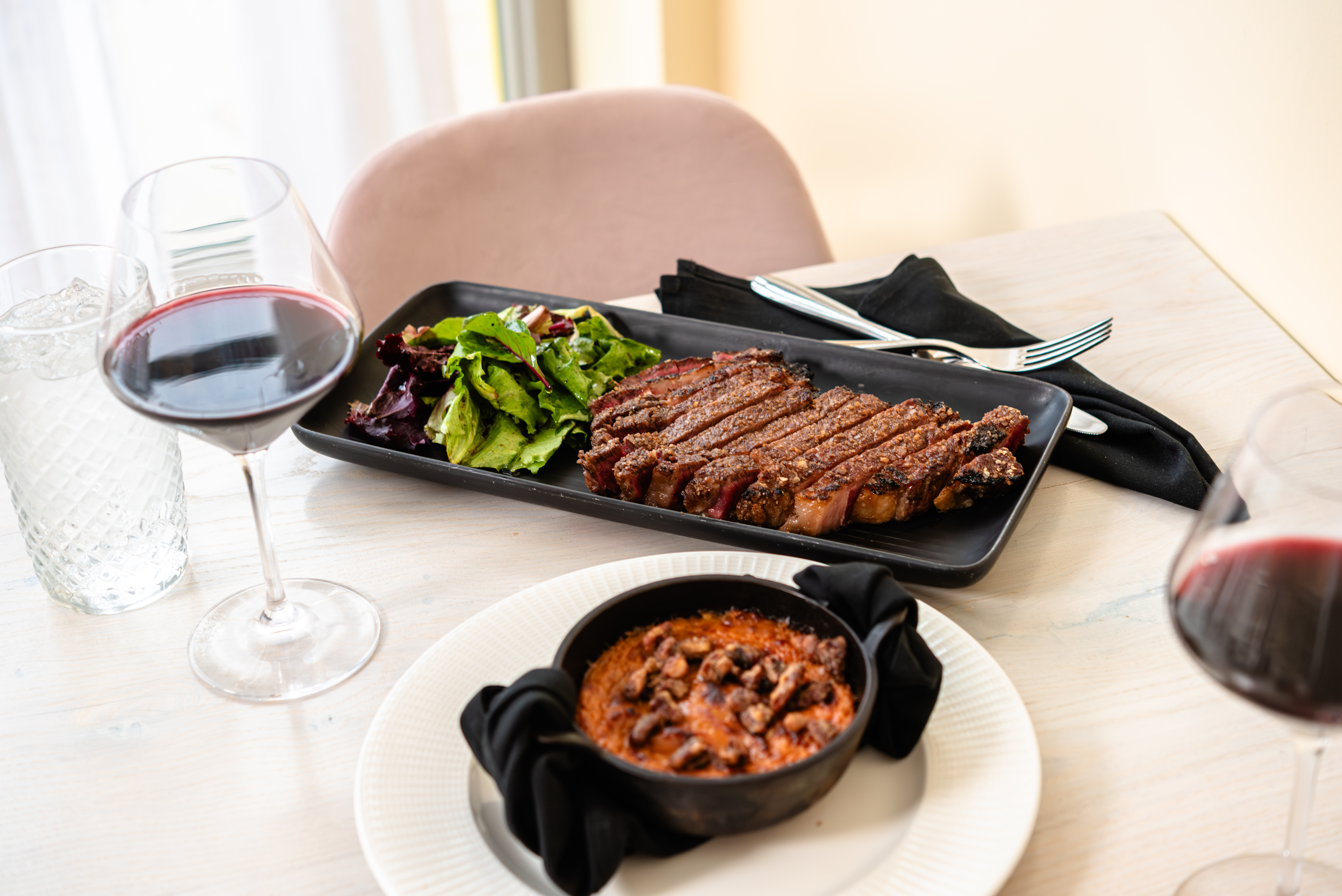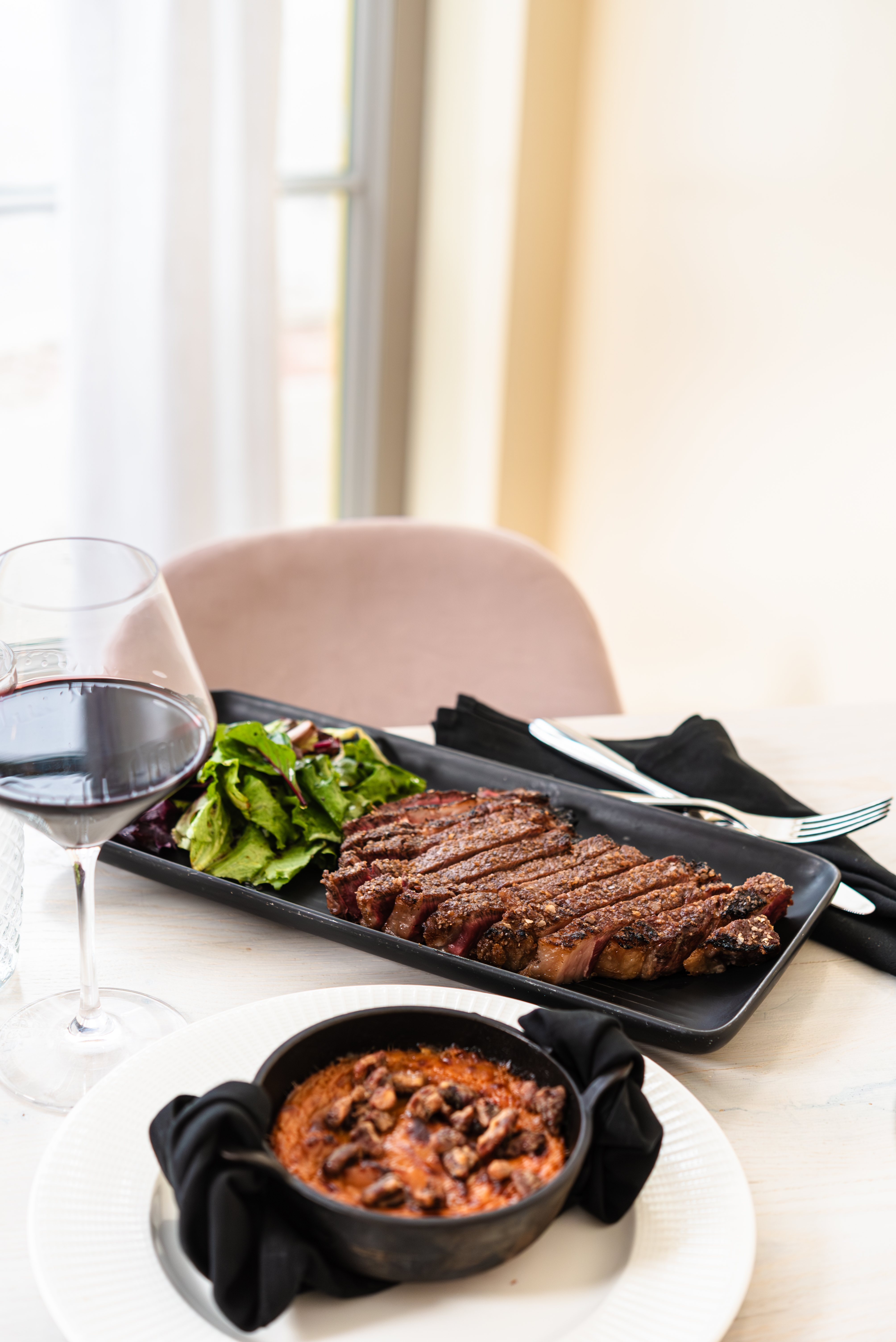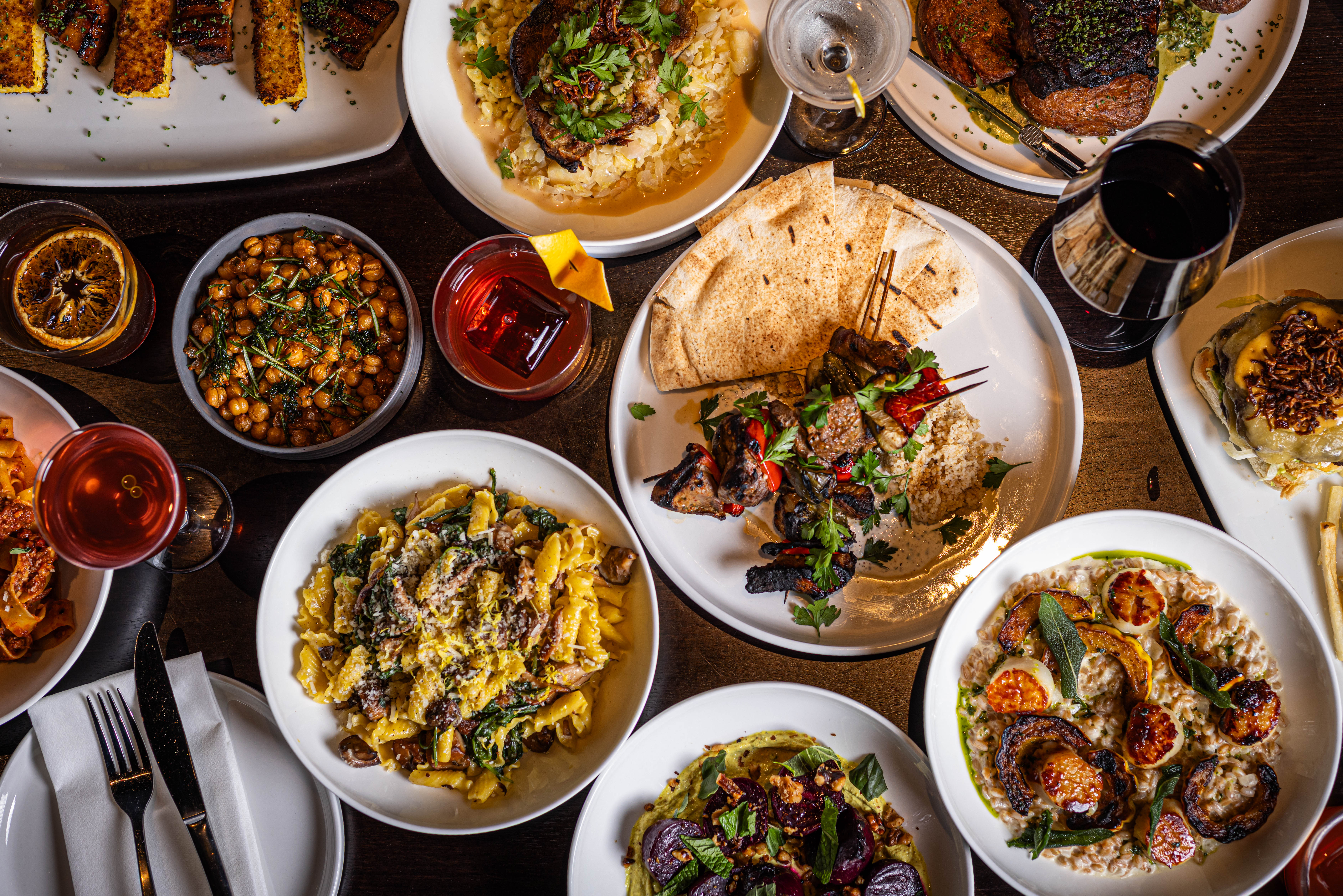How-To
The West Side Market is the best kind of cooking school, says Marilou Suszko, the local food advocate and coauthor of a new book, Cleveland's West Side Market: 100 Years and Still Cooking. "The real butchers are there, the guys who know how to create the cuts you're learning about on the Food Network," she explains. "The vendors are very good at educating you about their product." Suszko, who grew up winding her way through West Side Market stalls with her grandparents, breaks down the best approach to shopping at this throwback food emporium.
1. Orient yourself. The market, Suszko explains, is laid out in a manageable grid of avenues and corridors. "To the west is the balcony. To the east is the clock. There are avenues labeled A, B, C, all the way through H, and each stand has a letter and a number." Most people are so awed by the sights that they miss the addresses tacked onto each stand. Check out westsidemarket.org, where you'll find a list of vendors with their specialties and addresses.
2. Be inquisitive. This is the place to ask questions. "There are a lot of people who want you to come back," says Suszko. The market includes more than 100 vendors. "Each is an expert in their own field," she says. "The longtime career butcher, who's cutting meat from quarters and halves, they can tell you all about these cuts — where it comes from, how you should cook it, how you should avoid cooking it, what things go great with it." And, she notes, most vendors are happy to provide a taste — just ask.
3. Be prepared. This is especially true when it comes to produce, says Suszko. "When the vendor says, 'This is at the peak of ripeness — you need to use it now,' it doesn't mean there's anything wrong with it — it means that it needs to be used now. He wants to move the product." Many of the vendors get their products at the Northern Ohio Food Terminal, so they're savvy shoppers, snagging deals on broken lots and super ripe food, and they pass those savings on to their customers. "Don't ever forget your cooler, packed with ice packs in the back of the car," she says.
How-To
Andrei Romaso worked his way up from a part-time job cleaning the Sebastian's Meats stand in 1995, to eventually purchasing it in 2002. Along the way, he's kept Sebastian's traditions, techniques and specialties alive, including the item the stand is best known for: suckling pigs, which weigh in at around 20 to 40 pounds. Romaso estimates he sells approximately 100 of the party pleasers during the Christmas season alone. Turns out, there's even more to love about pigs than the standard chops, bellies and bacon. "Some people like the cheek meat," he notes. "Some people love the ears [and] will not buy the pig if it doesn't have ears." We asked Romaso for some pointers on the best approach to snout-to-tail cooking.
1. Know the pig-to-person ratio. "The general rule is usually a pound per person," says Romaso. Holiday suckling pigs should fit in most standard ovens. Romaso will even crack the legs for you. And while some are long and lean, you want the short, fat guys. "I would rather get the little chunky one," he says. "There's more meat."
2. Treat it like meat. The pig should fit in a large roasting pan, laying on its belly with its legs splayed out. Season it with a salt, pepper and garlic rub, or go the Filipino route: "[They] like to stuff it with lemongrass," says Romaso. If you're going all Renaissance Faire on your piggy, stuff the apple in its mouth before it goes in the oven. The jaw can be hard to open afterward.
3. Cook it slow and low. "If you want that crispy skin, you would not cover it," cautions Romaso. "A 25-pound pig would take five to six hours at 325 degrees." Check for an internal temperature of 160 degrees in the shoulder and butt, where the meat is the thickest. Check it every hour, since the pig can go from done to dry very quickly.
How-To
Marla Pernice grew up visiting the West Side Market with her parents. So when her daughter, Rio, was born seven years ago, her trips to the market took on a whole new meaning. "I look at it as a family outing," she says. "It's a cultural experience. Our in-laws are from New Jersey and we always make it a point to take them there." Here are her tips for traversing the market with children when there are no shopping carts, no Eagle's Nest and no cartoon-laden treats in sight.
1. Bring company. "Normally when we go, we bring a friend of my daughther's along with us," says Pernice. "It's quite a bit more fun. You don't have to keep a child entertained; there's so much to look at. They see different stuff than what we see, because we're taller — an entire pig, a humongous big fish. Sometimes we wouldn't see that stuff because it's down low."
2. Slow down. "If I go to the market without my daughter, I don't stay there long," notes Pernice. "I spend more time there when I go with her. [She's] going to stop every 30 seconds to look at something." A stop at Campbell's Popcorn Shop, with its glass case full of treats, comes standard. "We always make it a point to go upstairs and people watch," she says. If you're there with another adult, split up so the kids have someone to wave at once they're in the balcony.
3. Give them choices. "My daughter's big on fruits and veggies, so we let her pick out that kind of stuff," she explains. Pernice and her husband hold Rio and her friends up to introduce them to vendors, let them ask questions and point out the old photos hanging in the stands. "One time she wanted to get celery. I didn't even know she liked celery!" Now Rio (and her guinea pig) eat celery all the time.
How-To
Vince Bertonaschi, owner of Vince's Meats, can chop up and dismantle a forequarter of beef, an endangered skill now celebrated as an artisan craft. Unlike grocery stores, Bertonaschi still receives the animal unbutchered, without processing or chemicals. His beef comes from a supplier in Ohio's Amish country, and it's hand-processed in his workspace in the West Side Market's basement. "The customer can get any cut of the cow," he says. That means Bertonaschi, who has 50 years of butchering knowledge, can prepare made-to-order meat, from throwbacks such as an English-style roast with ribs attached or choice beef diced for your stew.
1. Call ahead. With ample notice, Bertonaschi can help you get creative with your cuts. Steaks and cuts sold with the bone, or with succulent fat attached, are still available at his stand. "Bone-in sirloins are perfect for roasting, even though [they're] mostly served as steak," he says. "If you want that piece with the fillet still attached, or a brisket with fat on both sides, I can prepare it." Want to know the choice cuts for stewing in a slow cooker, shish kebob grilling or sautéing? Skilled butchers can assist novice chefs by matching ideal cooking method and piece. They can help you differentiate between, say, a rump roast and a pot roast (hind leg vs. shoulder), or tender or tough meat. Ordering sliced or cubed pieces in a size tailored to a recipe guarantees all pieces come from the same premium spot.
2. Fat is flavor. Marbling reveals the taste and tenderness of the beef. "It should resemble the lines on a leaf," Bertonaschi says. He prefers corn-fattened cows to leaner, grass-fed cows, because fat keeps meat moist and adds buttery-beef flavor. "My customers want it to taste good, so they want the fat that comes from a corn-fed cow," he says.
3. Know your meat-to-fat ratio. Develop your own blend of ground meat by telling the butcher how much fat or lean meat you prefer. This ensures a natural mixture from a single cut. "Every family has their idea on how lean their burger should be," Bertonaschi says. Some mixtures, like meatballs, require at least 20 percent fat for moistness.










